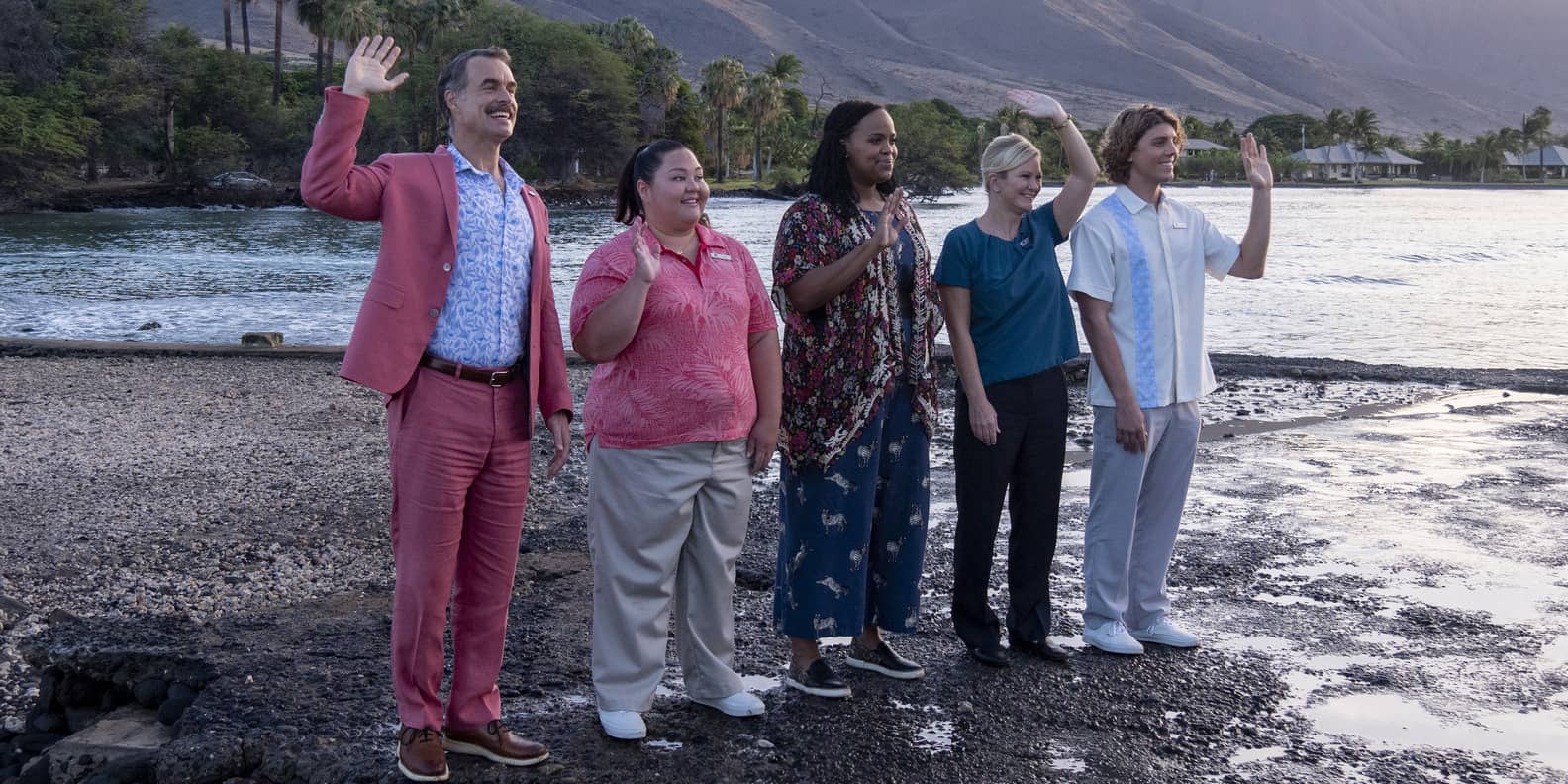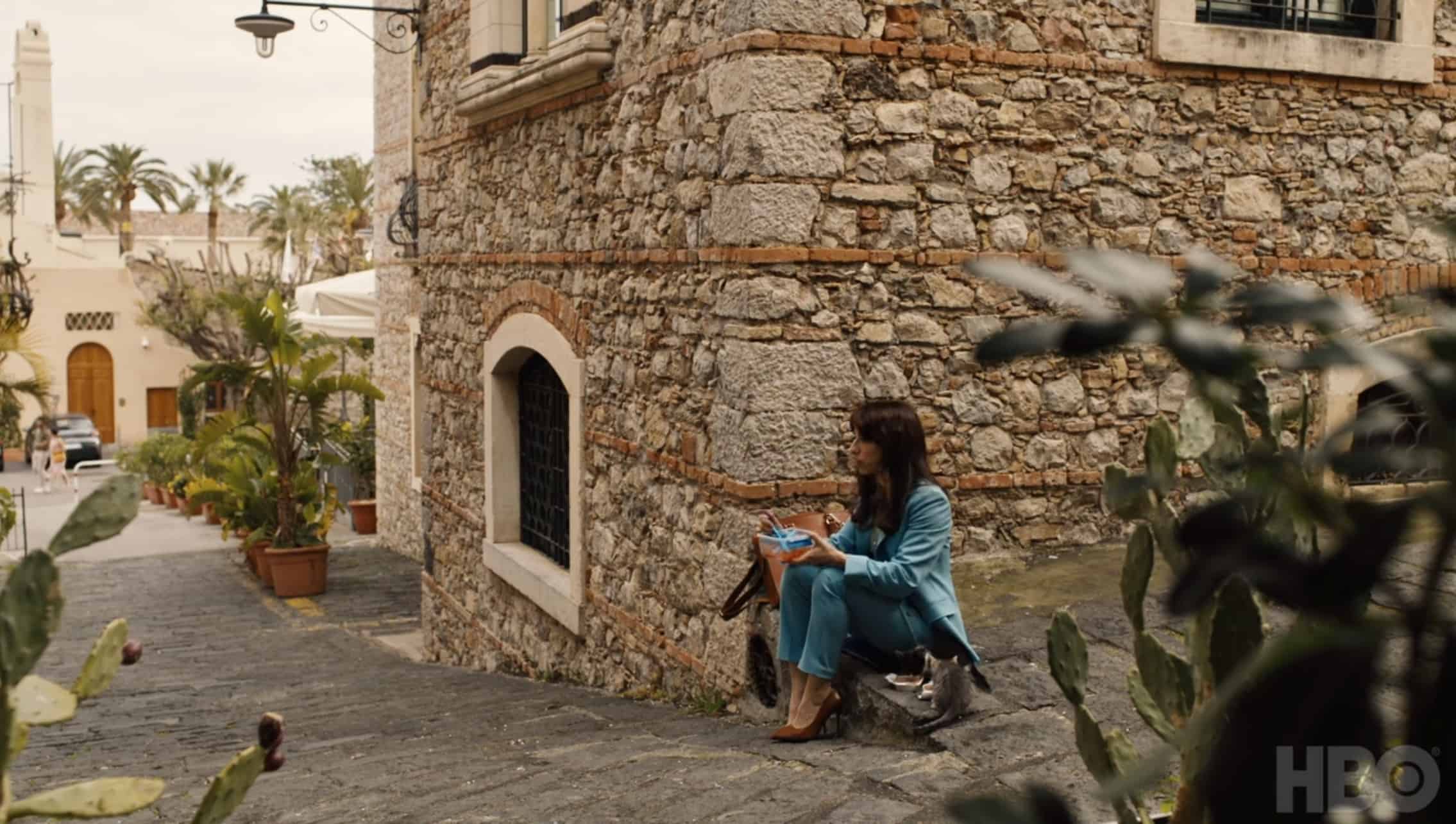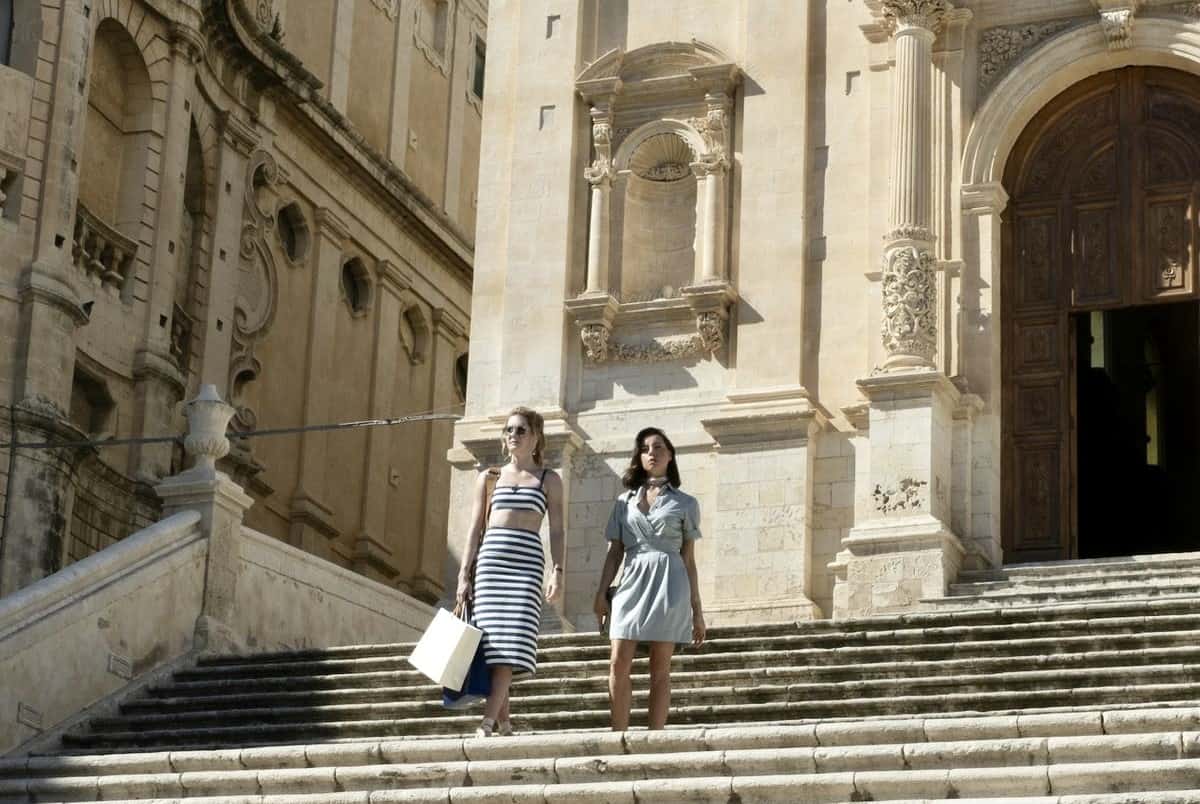
Part of the appeal of “The White Lotus” is the perfect, idyllic backdrops that make you want to pack your bags and jet off to an exotic locale. The beautiful, fictional White Lotus resorts in Maui, Hawaii, and Taormina, Sicily provide the show with many opportunities for gorgeous cinematography, but this isn’t a show that ignores the many layers of what the audience sees. The show’s location scouts carefully chose the resorts’ locations not only to provide beauty, but also to enhance the general sense of the wrongness of the events taking place there.
The show tackles these issues head on in Season 1 through the character Kai (Kekoa Kekumano) and more subtly in Season 2 through all the locals. Let's take a look at each location and what it did for that season of the show.
**Season 1 and 2 spoilers ahead!**
Season 1 in Maui, Hawaii

Kai, an employee at the White Lotus, reveals that his family formerly owned a lo’i, or a terraced taro patch, that was granted to his community’s Konohiki, or tribal chief, by the first Hawaiian king, Kamehameha. The local people maintained a treaty with the county to preserve their native lands, which the county government violated by selling the land to the White Lotus Resort and allowing it to develop. Kai’s brothers and other community members want to fight the county government in court, but they can’t gather the money. That leads to Paula (Brittany O’Grady) and Kai’s ill-fated plan to rip off the Mossbachers.
Most Americans know the U.S. forcibly conquered Hawaii, but it’s a topic our history classes brush over. A sovereign kingdom for a century, Hawaii attracted American and European missionaries who, once there, became involved in the valuable sugar industry. Over time, whites gained disproportionate control of land, wealth, and political power, and had a vested interest in preserving the tariff-free sugar trade with the U.S. The Hawaiian League, a militant group formed by some of the kingdom’s most powerful plantation owners, executed a coup against the court of Queen Lili’uokalani with the assistance of American troops in 1893. After heated debates in Washington, Hawaii was officially annexed against native Hawaiians’ wishes.
Since then, native Hawaiians have become a minority on their islands, with inequality still plaguing their lives. A significant racial pay gap and higher unemployment rate create economic segregation that pushes native Hawaiians out of cities, where tourist accommodations and investment homes drive up the cost of living.
Kai’s storyline brings those issues into sharp focus, allowing the audience to see the resort in a new light — an artificial monstrosity representing a great injustice to the local people. That, in turn, gives a new perspective to the other guests’ storylines. We’re still invested in their well-written characters, but their problems seem superficial as we watch them frolic in their manufactured paradise, blissfully unaware of the greater problems they are contributing to simply by being there.
Stealing should never be condoned, but Kai’s fate of being caught, arrested, and having the stolen jewelry confiscated, while Paula receives no punishment, is an incredibly frustrating storyline. It drives home the show’s statement about the unfairness native people still regularly experience.
Season 2 in Taormina, Sicily

Like many places in Southern Europe, Sicily lives and dies with the tourist season each year. Situated in Italy’s traditionally impoverished south, it’s an island that, like Hawaii, had an agricultural economy before it became a tourism hotspot. Wealthy tourists from Northern Europe and the U.S., however, have driven up the cost of living by purchasing holiday homes they leave unoccupied for 11 months of the year. Italy 24 News reported this year that six towns in Sicily have an uninhabited housing rate over 70 percent, and many more towns are over 50 percent.
Sicilian locals rely heavily on the annual tourism industry to provide employment opportunities, which are otherwise scarce. Sicily has a youth unemployment rate of over 40 percent, triple the European average. According to Statistica, the average income for Sicilians is €27,100 per year (about $28,600), or about €2,200 ($2,300) per month before taxes, which leaves earners in that pay bracket about €1,675 to take home after taxes.
In Taormina, where Season 2 of White Lotus takes place, the average price of a one-bedroom rental apartment is about €1,000 per month. That means locals either live in extremely poor accommodations, rely on government assistance, or, as with many locals on the show, earn side money through some type of black-market business.
The two locals we get to know the best, Lucia (Simona Tabasco) and Mia (Beatrice Grannò), take advantage of the nearby White Lotus Resort by scouting for high-paying escort gigs among the wealthy American guests. Lucia charges around €2,000 per night for her services, more than she could earn in a month working a full-time job in the local economy. The other locals we meet, including Niccoló (Stefano Gianino), Tanya’s (Jennifer Coolidge) mafioso arm candy, and Alessio, Lucia’s supposed pimp, are also involved with under-the-table dealings to get ahead in a place with little hope.
The Di Grasso family that Albie (Adam DiMarco), his father (Michael Imperioli), and his grandfather (F. Murray Abraham) seek out in Testa Dell’Acqua gives us a good idea of the local attitude toward tourists. By owning their own stand-alone home, it’s clear that the Di Grasso family is well off for the area, but that doesn’t stop disdainful looks and comments from the Americans. The Sicilian Di Grassos are hardly impressed when a shiny Mercedes SUV full of English-speaking tourists pulls into their drive, family or not. The scene does a masterful job of illustrating that the American Di Grassos look down on the local way of life despite having romanticized their ancestry there. At the same time, the Sicilians view them as invaders.
The White Lotus Locations

Each of the White Lotus locations so far has been chosen to provide scenic beauty as well as an undercurrent of inequality and segregation between resort guests and locals. Since the show is also a murder mystery, the tension fueled by the resort being in these locations adds an air of unease to everything that happens. It works perfectly to build suspense and provide plenty of opportunities for characters with different motives.
It has been announced that Season 3 of “The White Lotus” will be set in Thailand, where the theme of modern imperialism will continue. It’s another location where tourism drives inflation while locals struggle with pitiful wages and seasonal work. Thailand is a major destination for sex tourism and misbehaving foreigners. Cops are said to readily take bribes, making it possible for wealthy visitors to get away with, well, murder — which is a perfect setup for a season of “The White Lotus.”
You can watch seasons 1 and 2 of “The White Lotus” with a Max subscription.
